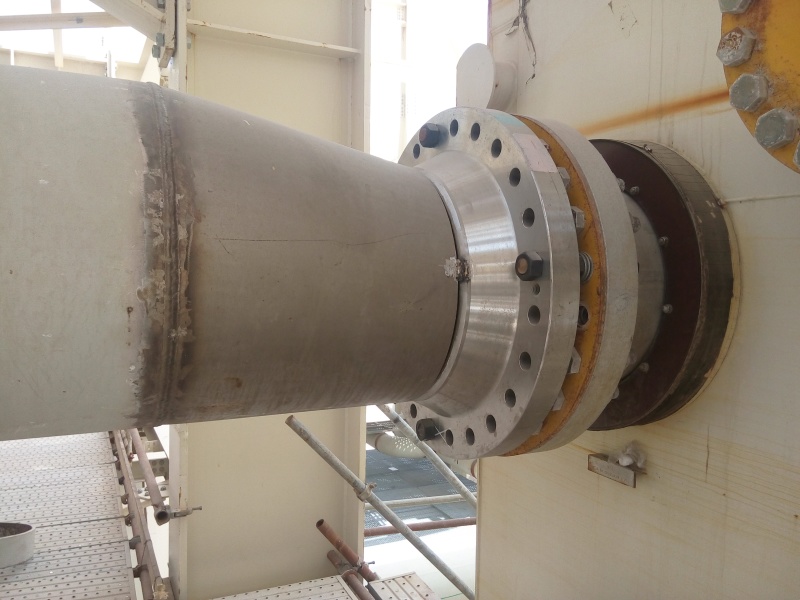KevenNZ,
You mention a very interesting point about the pipe loads. Larger pipe is stiffer and will put high loads on the nozzle. That mMakes sense.
Larger pipe catches more wind and weighs more, so wind and gravity, and even dynamic loads would be higher for moving pipe (on a ship for example). That started me thinking about thermal loads. When large pipe and small pipe are operating at equal temperatures, stressses will be more or less equal, but the larger pipe will place greater loads on attached equipment and supports.
While as logical as that is, I would say that, due to the design sequence as it passes through process and then into piping and then pipe stress flexibility engineering. It is somehwat isolated, as there is little opportunity for feedback from piping to process. Process is acustomed to telling us the pipe size and how big the equipment should be, because they've done the velocity, power, and cost optimization study already. So that's ususally the end of the discussion and as a consequance, the environmental and thermal loads are not often included in the pipe diameter - equipment size optimization practices. I will say the same for corrosion and erosion as well. The piping and corrosion engineers may come to mutual agreement on increasing pipe size, but that decision is not normally (in my experience) isn't part of the pipe diameter - equipment sizing optimization. About the most that would ever happen as a result of increasing pipe diameters for corrosion or erosion, or load limiting purposes on a typical petrochem project would be reanalysis of overall pressure drop and adjusting the pipe purchase budget. Pipe diameters would be increased and anchors would be added to make the piping enginer happy and possible further affects on equipment size would not be considered.
At least it's that way for pipeline, refinery and chemical plant design where heavier pipe weight and larger gravity, dynamic and thermal loads are more or less easily and cheaply accommodated. The practice is different, if the pipes were going into an airplane, SpaceLab, or the starship Enterprise, or in ocean going ships and offshore platforms, where accommodating high weights, loads and large piping and equipment volumes can all be relatively costly, or dangerous, to have onboard.
While there could be a number of other factors that may affect the pipe diameter -equipment size optimization, I have to stick with the idea that the two most important factors are the relatively low cost of large pipe, to keep operating pressure to a minimum vs the higher cost of buying larger equipment that must operate at high pressure. The resulting optimized objective then becomes purchasing equipment as small as possible for the given capacity and lowest possible operating pressure. To put it in terms of what the OP might understand. Nobody is going to spend millions extra on buying larger, heavier equipment just so the nozzles can match the pipe diameter. (... no matter how nice it would be to get rid of those eccentric reducers that nobody seems to remember which way to orient the flat sides.)
Technology is stealing American jobs. Stop visas for robots.


